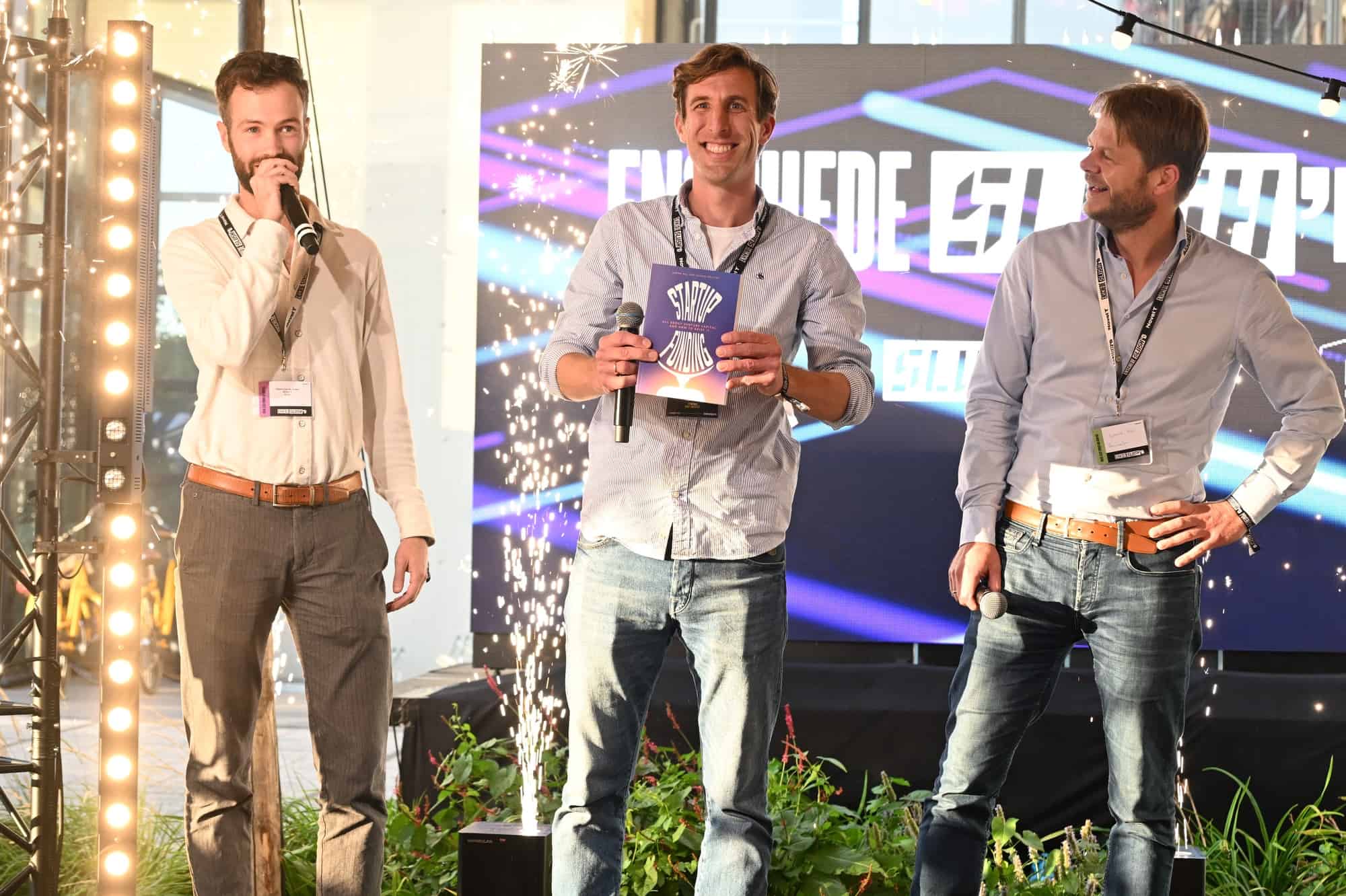
In a series of round tables, EY is connecting start-up and scale-up entrepreneurs to the expertise of experienced investment professionals. This round, organized and hosted by EY’s Katja Hilckmann-Winkel and Inge Dinnessen-Dassen, it’s all about Series-A. When, how, why is a company ready for it? In three keynotes and Q&As, the 25 participants get the answers to their most relevant questions.

Today, it’s all about investor readiness. Term sheets, due diligence, the legal aspects, but also the most common pitfalls. At the end of the 90-minute session, the participants turn out to be much more in the know about the next steps that should – or at least could – be taken.
Timing is crucial, says Greyt CFO Erwin van Meeteren. “When does Series-A make sense in the first place?” A founder needs to know when the step from seed capital and angel investments to the next phase can be made. “In your early stage, the business model is still uncertain and product development is not yet finished. Only after this phase, so when you have a proven business model, you should go and look for additional money.” This could come from investors, but, Van Meeteren warns, that’s not the only way to grow. “Try to attract money through sales as well, by looking at leasing or factoring opportunities. Don’t focus on a Series-A as the only solution too soon.”
But that’s easier said than done because if you expect further growth for which a lot of money is needed, you need to start looking for VCs at some point. “Typically, you would need around six to nine months for the whole process between admitting a certain need and signing an agreement, Van Meeteren’s colleague Tim Janssen adds. “So it is wise to find out how fast your company needs the money. If you rush into a Series-A, you risk giving away too much equity or other benefits to a VC.”
“If there is a lack of fundraising strategy, it’s going to be challenging.”
Nicolas Christou
Janssen sees four phases in the process, each lasting one to two months: preparations, investor selection, negotiations, and closing the deal. “For the first phase, focus on your own data: a business plan, your forecasts, an attractive pitch deck, and a presentation. Then, make a selection of 30 to 50 potential investors, because in our experience that number is really needed in order to be successful at the end of the day. In this phase, expect to make at least 50 to 80 phone or video calls. If that is done properly, you could go into further depth with just a couple of them.”
Due diligence readiness
Van Meeteren stresses the importance of ‘due diligence readiness’. “Most entrepreneurs are not, that’s why we help them with this. It’s all about being in control of your internal information. For example, a professional directory to store all your data helps a lot.”
Before focusing on the potential pitfalls of a Series-A round, Inkef’s Nicolas Christou and Kunal Singhania explain what their company is always looking for in a growing start-up. “At Inkef, we focus on building companies, not valuations.” What Inkef looks for can be summarized in three important factors, Singhania adds. “A product-market fit, a readiness to scale, and execution power. These elements need to be in order before investors are excited about an investment opportunity.”
If not, the pitfalls become visible right away, Christou shows. “Even before an introductory meeting, if there is a lack of fundraising strategy, it’s going to be challenging. Reaching out to all VCs with general messaging can be alarming. It’s a tight community, VCs talk to each other as well, the word can spread fast.” Hence it is important to prepare yourself properly and only address the VCs that really have a fit with your company, it’s a two-way street.
Imbalanced teams
Another pitfall is about an immature go-to-market strategy. Singhania: “We often meet founders who have a great product and a well-designed tech, but are unclear on their GTM strategy. What you see is when founders don’t have visibility on key metrics like unit economics, they are unable to identify their Ideal Customer Profile. This, in turn, feeds into a misdirected sales & marketing strategy, resulting in high customer acquisition costs, and an excessive cash burn.” And then, there’s pitfall three, an imbalanced team. It is often at the Series-A stage when the founders may realize that they are strong in their technical domains but the company lacks senior management on some of the other fronts like commercial or operational. Singhania further adds “The team is the most important aspect of a company and an incomplete or imbalanced team can mean there is no orchestration between the product, tech, sales, and marketing functions which need to work hand in hand.”
“Investments are like marriages. Both parties must be fully committed to the deal, from a strong belief that it’s in the best interest of both.”
Erwin van Meeteren
Siem Huijbregts (HVG Law) also knows the pitfalls, but from a legal perspective. He starts his keynote by looking at the typical investment structures, which are all about direct or provisional issuance of shares to investors. “There are a lot of options, all with their own pros and cons. Most importantly: there’s much more to it than just trying to attract the highest amount of cash for the offered percentage of shares.”
Step-by-step, Huijbregts takes his audience through the phases of a deal, convincingly showing how some arrangements might turn an exit into an investor’s party, instead of a victory for the founders. “Key in this is the liquidation preference, a clause in a contract that dictates the payout order in case of a liquidity event, such as a private M&A transaction or an IPO. Typically, the company’s investors or preferred stockholders get their money back first. By then, the founders might regret the choices they made earlier in the process.”
Multiple layers
Huijbregt’s main message, therefore, is to never focus on money alone. “It’s also about the way you strike a deal, and with whom. Do you work with milestone investments, with blocking votes, what kind of anti-dilution element do you build in, and how about vesting rights and drag-along arrangements? It’s often a complex structure with multiple layers that should be carefully thought through in negotiating the investment.”
While wrapping up the round table, all keynote speakers agree on one aspect: there needs to be a real fit between the VC and the company. “You could compare it to a marriage”, Van Meeteren concludes. “One wouldn’t step into a marriage without first getting to know each other and experiencing the fit between the partners. With investments, it’s no different. Both parties must be fully committed to the deal, from a strong belief that it’s in the best interest of both.”







